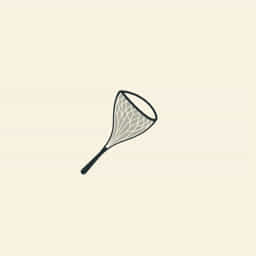For many anglers and bait catchers, success often depends on how quietly and efficiently they can collect baitfish without scaring them away. This is where a No Spook Cast Net becomes a game changer. Designed to reduce visibility and disturbance in the water, a no spook cast net allows you to catch live bait with greater precision and efficiency. Understanding how these nets work and how to use them properly can make a noticeable difference in your bait-gathering efforts, especially in clear or shallow water where fish are easily frightened.
What Is a No Spook Cast Net?
Definition and Purpose
A no spook cast net is specifically engineered to minimize visual and vibrational cues that typically scare fish. Unlike standard cast nets that may have bright lines, reflective weights, or noisy closures, no spook nets are often made with transparent monofilament and streamlined sinkers that glide silently through the water. This allows fishermen to cast near skittish bait schools without scattering them before the net lands.
Key Features
- Transparent mesh: Often made from clear or light-colored monofilament to blend into the water.
- Quiet sinkers: Designed to reduce noise upon entry.
- Slim leadline: Helps the net open smoothly and settle without abrupt motion.
- Lightweight construction: Easier to throw and less disruptive on the water’s surface.
When to Use a No Spook Cast Net
Clear Water Conditions
In crystal-clear waters, baitfish can see standard nets from a distance and flee before the net lands. No spook cast nets offer a stealthy advantage, blending into the surroundings and allowing closer casting without detection.
Shallow Flats and Tidal Pools
Shallow water amplifies sound and movement. A traditional net might hit the surface too hard or cast too loudly, scaring fish. A no spook net minimizes surface splash and entry noise, making it ideal for shallow areas.
Targeting Finicky Baitfish
Some species, like finger mullet, sardines, or pilchards, are extremely sensitive to movement and changes in light. These fish require a stealthy approach, and using a low-visibility net can help you get close enough to trap them effectively.
Choosing the Right No Spook Cast Net
Mesh Size
The mesh size determines what size baitfish the net can effectively catch without gilling or slipping through. Smaller mesh is better for tiny baitfish like anchovies or glass minnows, while larger mesh suits mullet or threadfin herring.
- 1/4′ mesh: Best for very small baitfish
- 3/8′ mesh: Great all-around choice for versatile bait
- 1/2′ or larger: Best for bigger baitfish in deeper water
Radius and Weight
Cast nets come in different radii, typically between 4 and 12 feet. A larger radius provides more coverage but requires skill to throw. No spook nets may be slightly lighter to maintain a soft splash and reduce vibrations.
Material Type
Clear monofilament is the gold standard for low-visibility nets. Nylon and treated synthetic materials may also be used but can sometimes be more visible or noisy upon entry.
How to Throw a No Spook Cast Net Properly
Tips for a Quiet Cast
- Approach slowly and stay low to avoid casting shadows over the bait school.
- Keep the net loosely coiled to allow a smooth, unhurried release.
- Practice your throw to ensure the net opens fully with minimal splash.
Common Throwing Techniques
There are several ways to throw a cast net, such as the one spin or shoulder tuck method. Regardless of which style you use, the goal is to create a flat, circular spread that lands gently over the fish.
Benefits of Using a No Spook Cast Net
Increased Catch Rate
Because the net causes less disturbance, fish are less likely to scatter before the net lands. This gives you a better chance of capturing more bait with each throw.
Less Effort and Time
With a higher success rate per cast, you can fill your bait bucket more quickly, leaving more time to focus on actual fishing.
Better for Sensitive Ecosystems
No spook nets are gentler on both the water surface and bottom habitat. This can be particularly useful in conservation-sensitive or heavily pressured fishing areas.
Maintenance and Care
Cleaning After Use
Always rinse your no spook cast net with fresh water after each use, especially after saltwater exposure. Salt and debris can damage the mesh and weaken knots over time.
Storage
- Hang the net in a cool, dry place to prevent mold and deterioration.
- Keep it out of direct sunlight for extended periods to avoid UV damage.
- Use a mesh bag for breathable storage and easier drying.
Inspect for Damage
Periodically check the mesh and leadline for tears, broken weights, or weak spots. Prompt repairs ensure that your next trip won’t be disrupted by a net failure.
Comparing Standard vs. No Spook Cast Nets
| Feature | Standard Cast Net | No Spook Cast Net |
|---|---|---|
| Visibility | Moderate to high | Low to none |
| Noise on Entry | Louder splash | Quiet and soft landing |
| Ideal Use | Deep or murky water | Clear, shallow water |
| Cost | More affordable | Usually higher price |
If you’re serious about catching your own baitfish and often find yourself in conditions where stealth is key, investing in a no spook cast net can be one of the smartest decisions you make. Its design reduces the chances of scaring off fish and helps ensure more productive throws. Whether you’re working calm flats or clear estuaries, this specialized net gives you an edge where it matters most when precision, silence, and effectiveness come together for a better day on the water.
